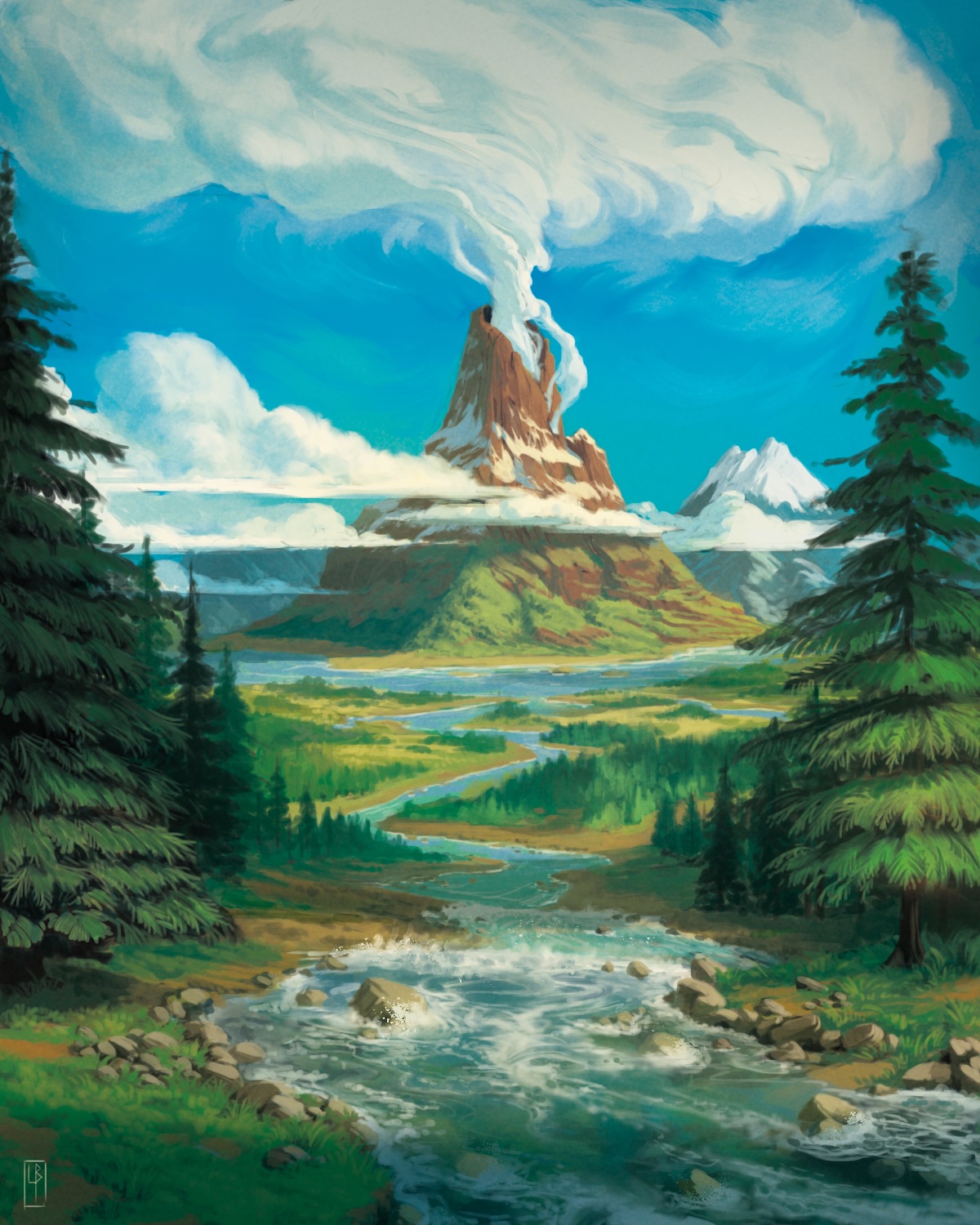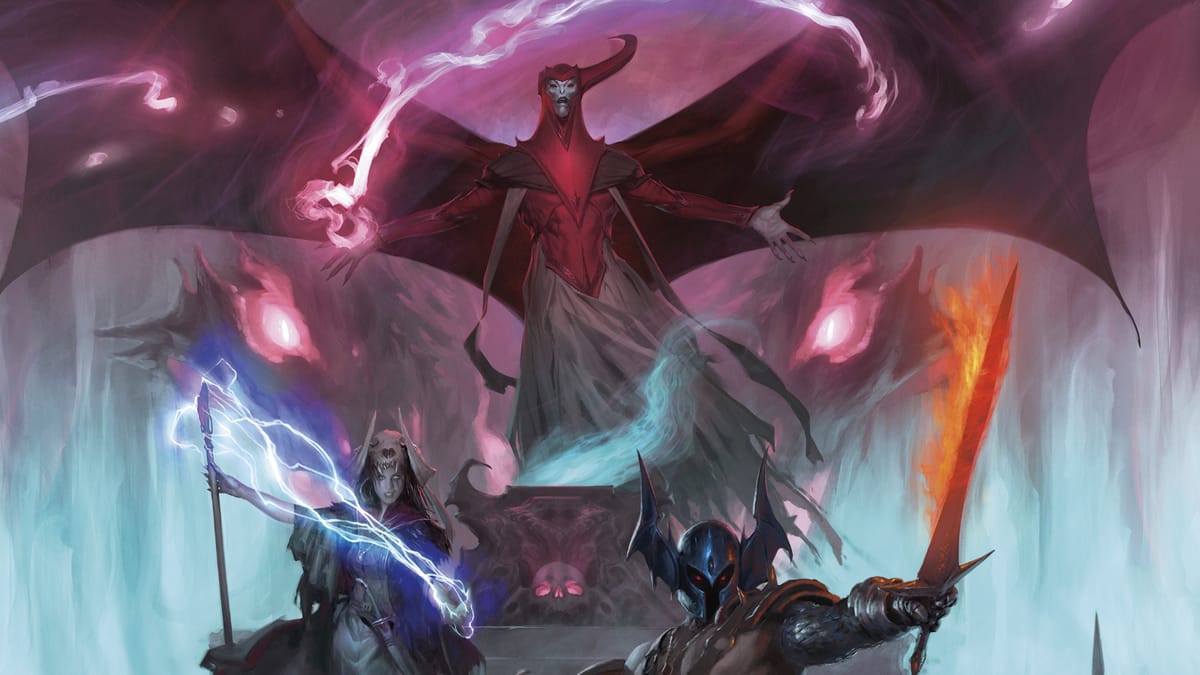
Wizards of the Coast’s next book for the Dungeons & Dragons 2024 updated rules is the Dungeon Master’s Guide. GamingTrend had a chance to hear from Wizards of the Coast’s lead designers for the new DMG, Chris Perkins and James Wyatt about what we can expect to see in the new book. They walked us through the book, highlighting changes to both structure and rules as well as the new additions to this not-quite-a-new-edition of the book. Set between the releases of the 2024 editions of the Player’s Handbook and Monster Manual, the new DMG will hit the shelves in November of this year.
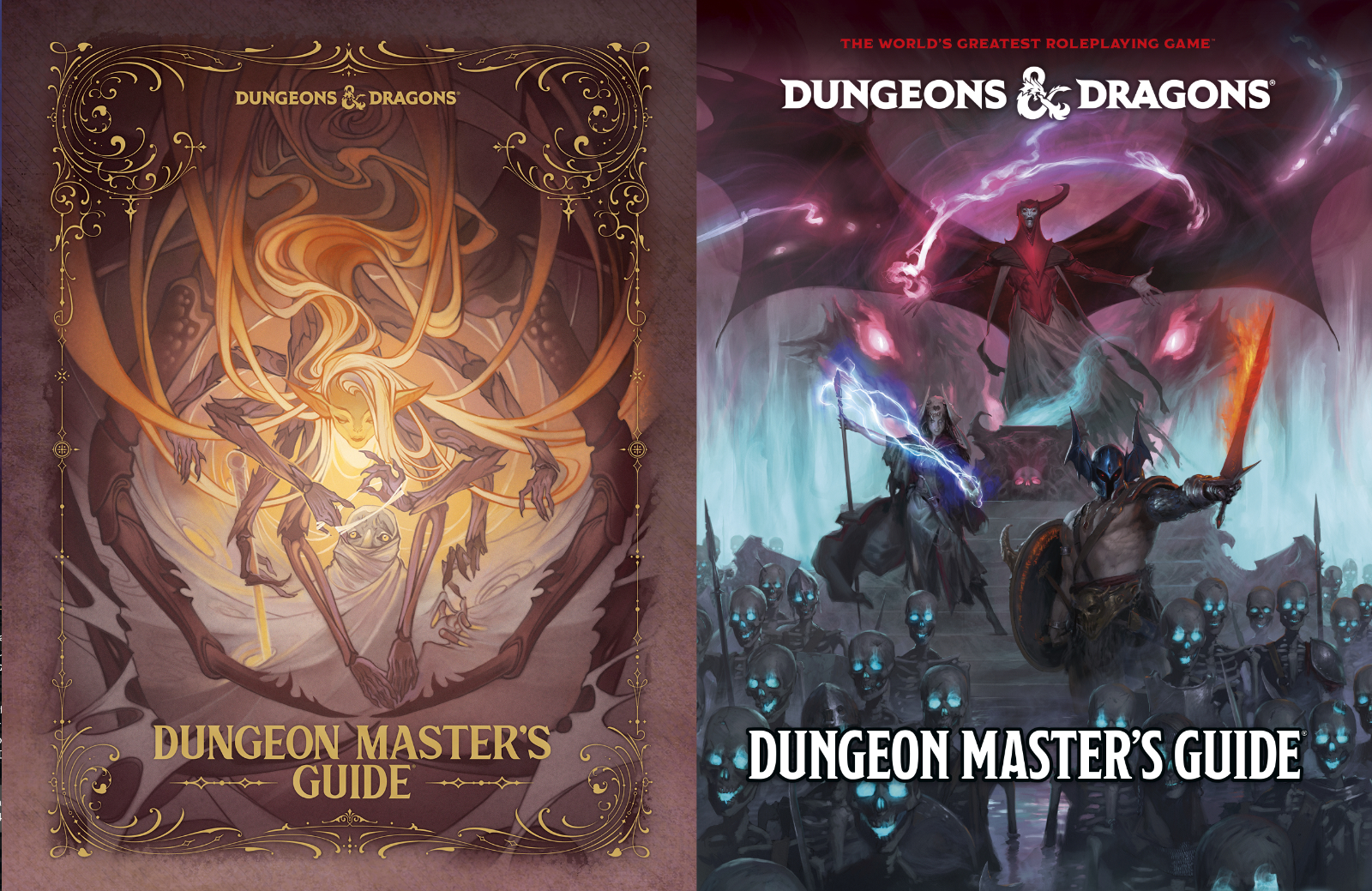
Alternate cover with Lolth (left), Primary cover with Venger (right)
This book will have over 380 pages and feature two covers. The standard cover, by Tyler Jacobson, will feature Venger from the 1980s D&D cartoon, while the non-standard cover by Olena Richards will feature Lolth, Queen of the Demonweb Pits.
As Chris states it, this book is designed to be the most useful, most friendly, most invaluable Dungeon Master’s Guide that there has ever been. They want the DMG to be a DM’s best friend– something that you have with you when you are prepping the game as well as when you are running it. But, like the 2024 Player’s Handbook, it will be backwards compatible with the 2014 rules. Current 2014 characters can play alongside 2024 characters with no issues.
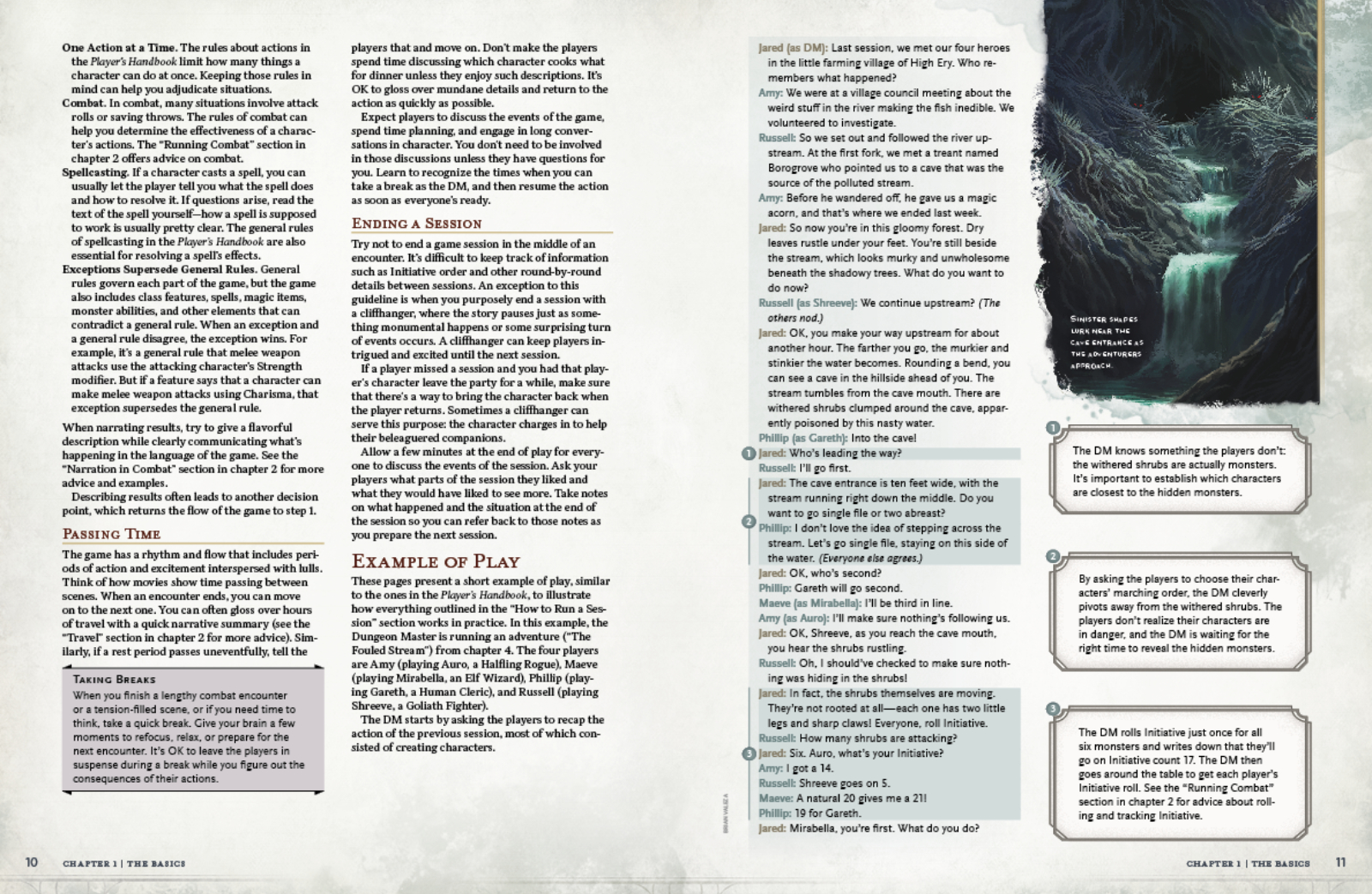
User experience improvements match what we saw in the Player’s Handbook 2024
How information is organized and presented to the DM has changed from 2014 to 2024. Up front, DMs get all the basic learning material – things they need to know to run a game and get a game off the ground. After that, the book dives into the details of one-off rules, how to design adventures, and then campaigns. Then comes information about settings, the D&D cosmology, then treasure. There are two new appendices: a lore glossary and maps. There are also new tracking sheets (fun new tools for DMs to organize thoughts, structure campaigns, track settlements, etc.) and a two-sided pullout poster map. The book’s chapter layout is as follows: 1. The Basics, 2. Running the Game, 3. DM’s Toolbox, 4. Adventures, 5. Campaigns, 6. Cosmology, 7. Treasure, 8. Bastions, Appendix A. Lore Glossary, Appendix B Maps.
One of the goals of this revision is to help teach DMs how to be DMs and get you in at the beginning. Not just a resource for novice DMs, but for experienced ones as well. Like Player’s Handbook 2024, there is a series of examples of play, but looking at them from the DM’s perspective as they make decisions about how the world responds to players’ actions. In here you’ll find out about the DM’s job, what is needed to get started, gathering players, preparing for a session and how a session flows. There will also be advice on facilitating the enjoyment for everyone at the table based on your unique group, which covers things like setting expectations for your group, understanding your players’ expectations and needs, and making sure that your game is safe and a place where everyone can have fun.
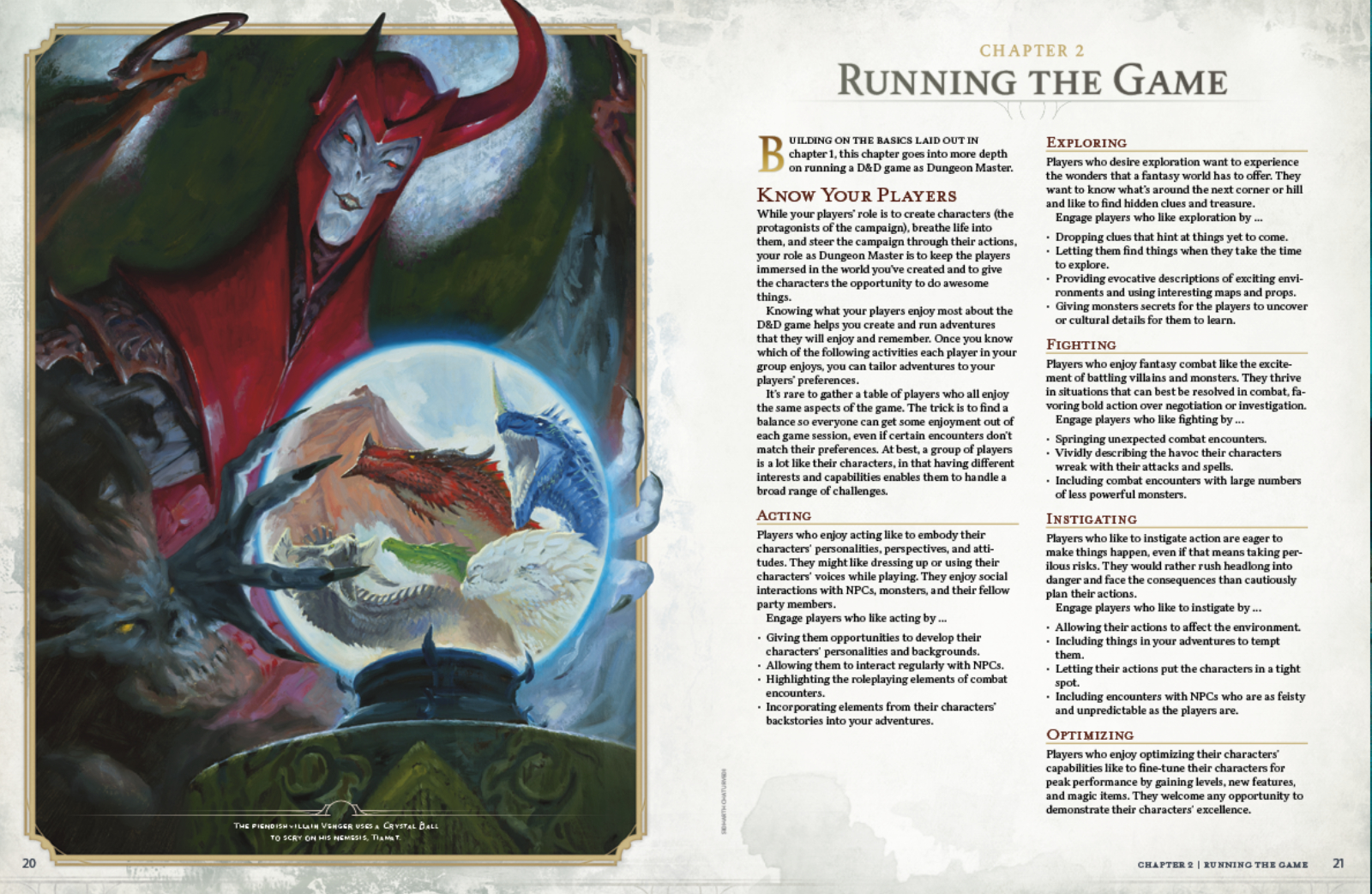
To that end, when it comes to running the game, there is information about how to incorporate elements into your dungeons to please the players at your table based on their individual tastes. The crunchy bits of running a game are also covered, such as adjusting for smaller or larger groups. The idea of the d20 Test is discussed and how it all works. How to decide what ability checks or saving throws a character should make and what the DC should be.
The Dungeon Mastering advice in this book is tried and true. Calling this a book for DMs by DMs, Chris and James pointed out that the likes of Matt Mercier and Deborah Ann Woll among others contributed to DMing advice. This design leans into helping DMs create a compelling narrative that is sustainable and a fun experience for all at the table. To support that, the book now includes tracking sheets (which will be available on D&D Beyond for free) that enable DMs to essentially create a campaign journal, recording your campaign as it unfolds. You’ll be able to use them to track things like player expectations and tastes, major conflicts in your campaign, and the details of a settlement or NPC.
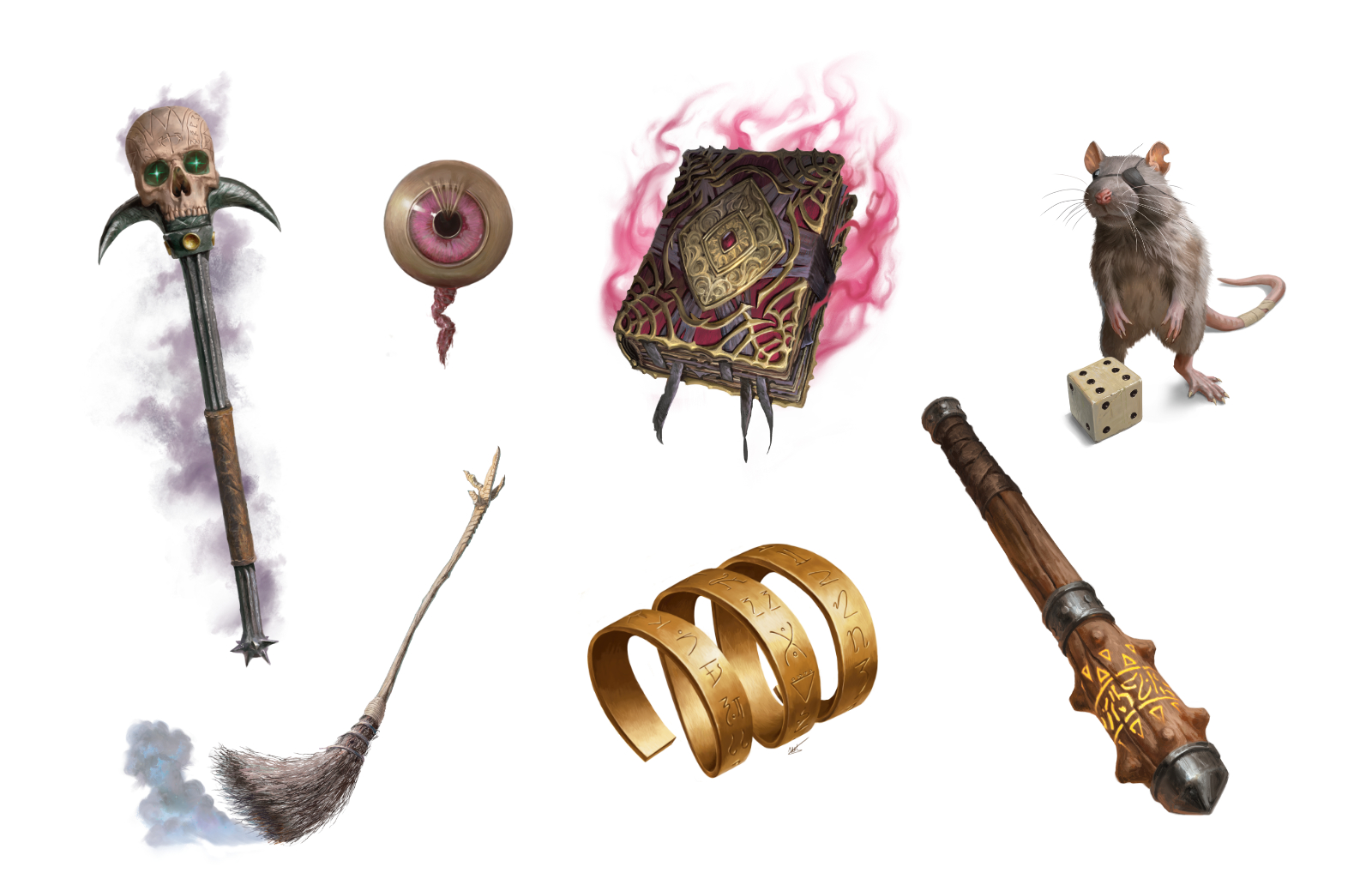
Wouldn’t be a DMG without magic items…
Chapter 3, the DM’s Toolbox, collects miscellaneous things that can come up in game preparation and during play. The chapter structure is similar to the rules glossary in the player’s handbook: topics are addressed alphabetically, but rather than having just a few paragraphs of explanation, each topic is covered by a page or more. Some entries are up to six pages long.
While some topics may come up in every game, you may not use the sections on firearms and explosives much. The same thing applies to siege equipment, but it’s there for those that do need it. As Chris describes it, “If you are building a dungeon and you need a trap, you can go to the traps section and pull a trap from there. If you need some other hazard, there’s a hazard section. If you want a curse to be part of the narrative of the game, but you are not sure how to create it, go to the curses and magical contagions section and find out how to create it.” Combat encounter creation is streamlined to make it easier for DMs to construct encounters of the challenge level they want with a less mathematically complex system. The NPC section has information on which NPCs work well for various situations and has tables you can roll on to generate NPCs quickly. There is also a section on gods and other powers, which gives you suggestions on building a pantheon from scratch.

…or potions!
The adventures chapter dives into creating and running adventures. Not just telling DMs how to make a published adventure their own, but advice on creating adventures. Highlighting minimal levels of effort to create a good adventure, as opposed to published adventures that are written for other people to run, this book looks at creating simple one-to-two-page adventure outlines. It focuses on thinking about the adventure’s narrative: the premise; the situation the PCs must deal with; how the PCs are hooked in; what the encounters are; and how it will end.
The 2024 rules highlight three pillars of the D&D game: social interaction, exploration, and combat. You can change the focus of an adventure to adjust combat vs social interaction vs exploration. The chapter includes five short sample adventures designed to highlight this variability that use maps in the map appendix at the back of the book. The whole idea is to create an evening’s entertainment without a whole lot of work.
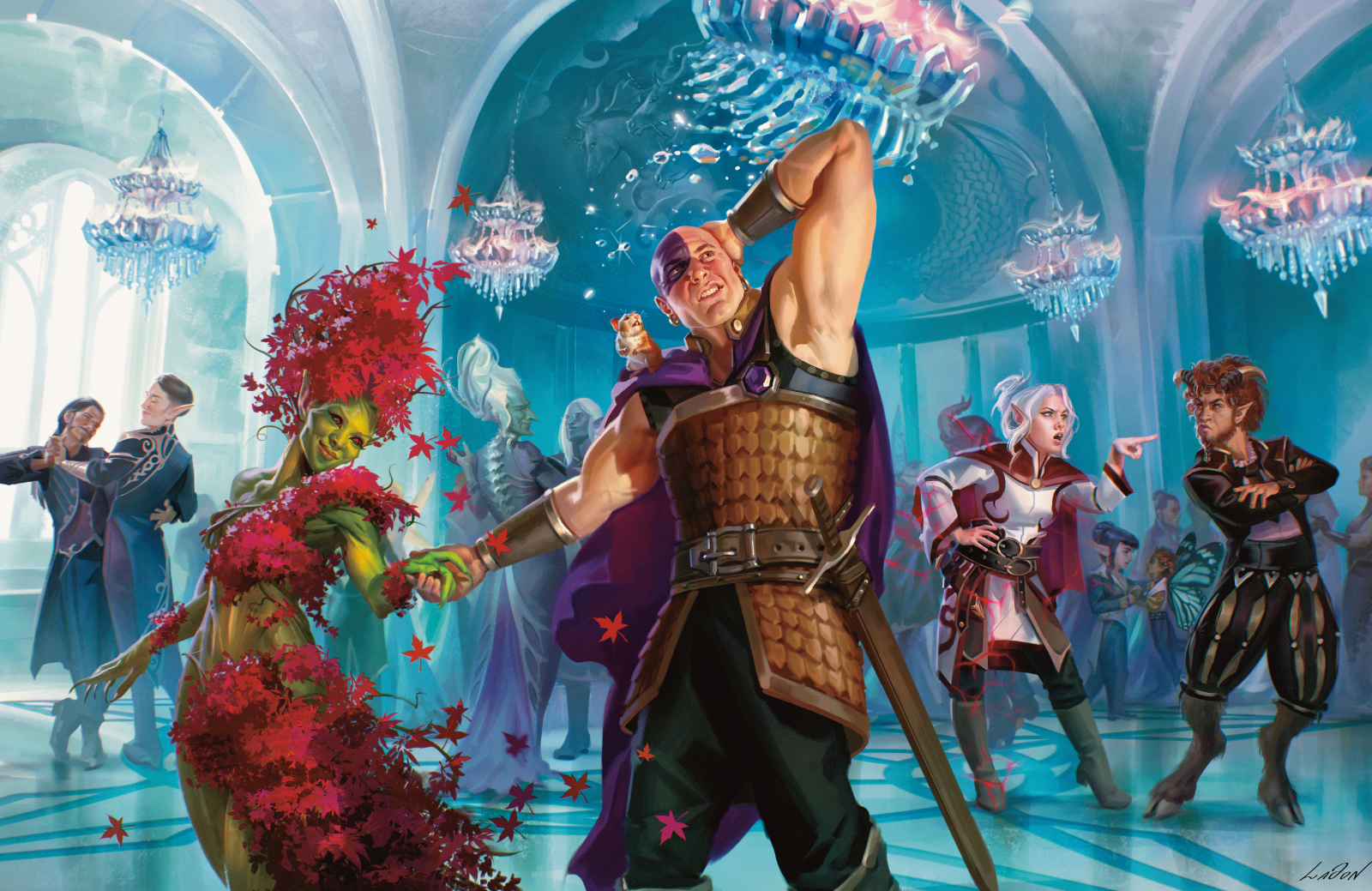
The campaign chapter is scaled up from adventures and discusses building campaigns in terms of metaphors like TV series story arcs. The chapter covers campaign premises, conflicts, how to hook in characters, how to plan adventures, connect them together in a campaign, and how to end a compaign. There is a sample campaign at the end of the chapter to illustrate the ideas in the chapter. Campaign design also discusses including player input, helping guide the DM into which conflicts are most resonant with the players. The adventures and campaigns chapters reflect one another. The sample adventures can be slotted into the sample campaign.
There are fifteen new maps (black and white in the DMG but colorized on D&D Beyond) that are stock D&D locations: tavern, mine, haunted manor, Underdark caves, farmstead, etc. Some are used in the sample adventures, but they can be used more than once. The style is deliberately clean, utilitarian, and top-down so DMs can imitate them and make their own.
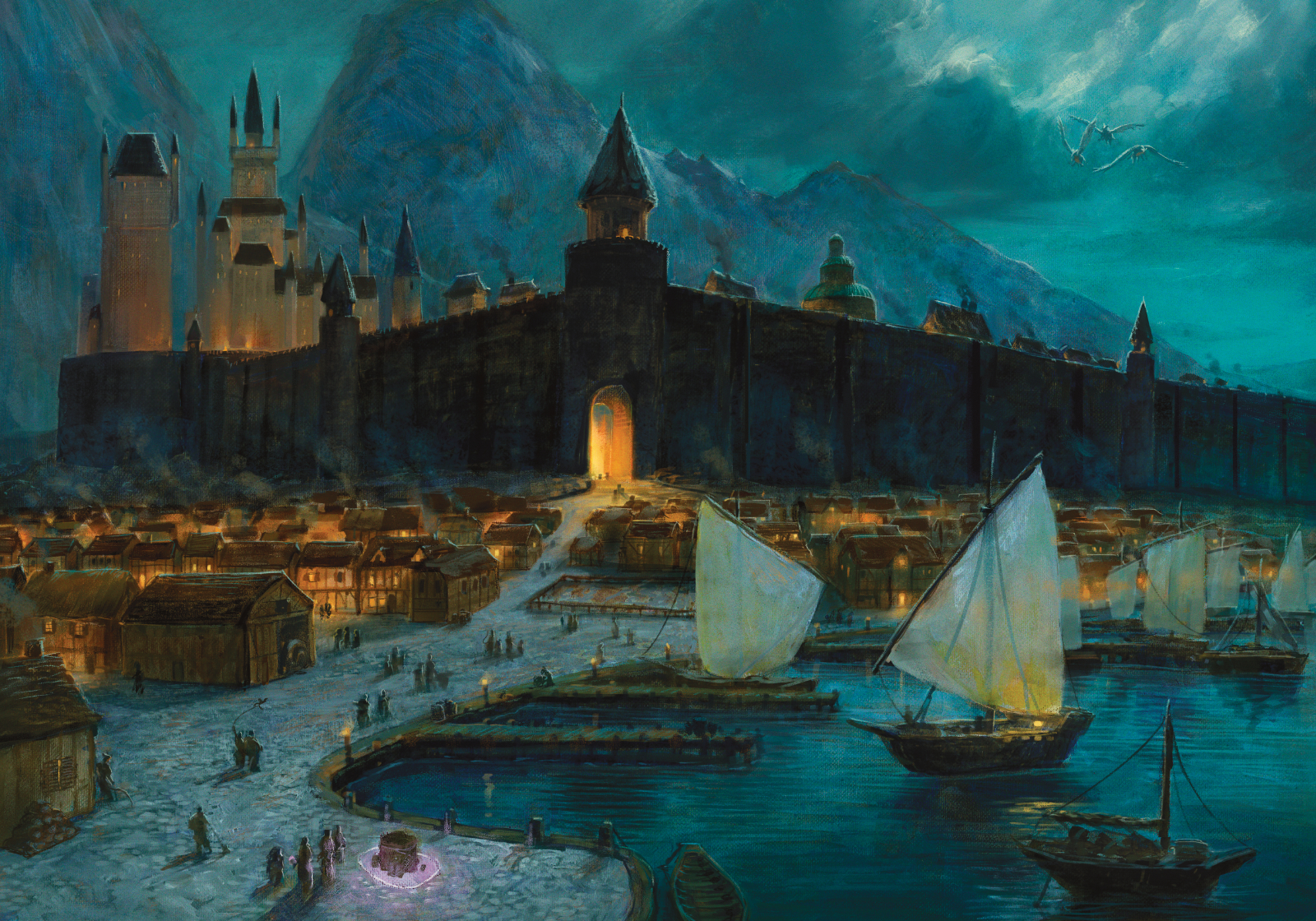
For the first time, the DMG has a campaign setting included within its pages. Nodding to the 50th anniversary of D&D, the included campaign resurrects the first official published campaign setting for D&D, the world of Greyhawk. With the idea that DMs can pick up and customize this setting as their own, Greyhawk is designed to include everything that’s in D&D. A nice perk of having the Greyhawk setting in 5th edition, as many of the famous NPCs that we know by name, such as Mordenkainen, Tasha, and Bigby all hail from Greyhawk. To support the campaign, DMs will get a two-sided pull-out poster map with a continent on one side and the Free City of Greyhawk on the other side. There are details about using the city as a campaign hub with brief descriptions of surrounding areas for players to explore. The Greyhawk setting implements the campaign advice that comes in the first part of the chapter.
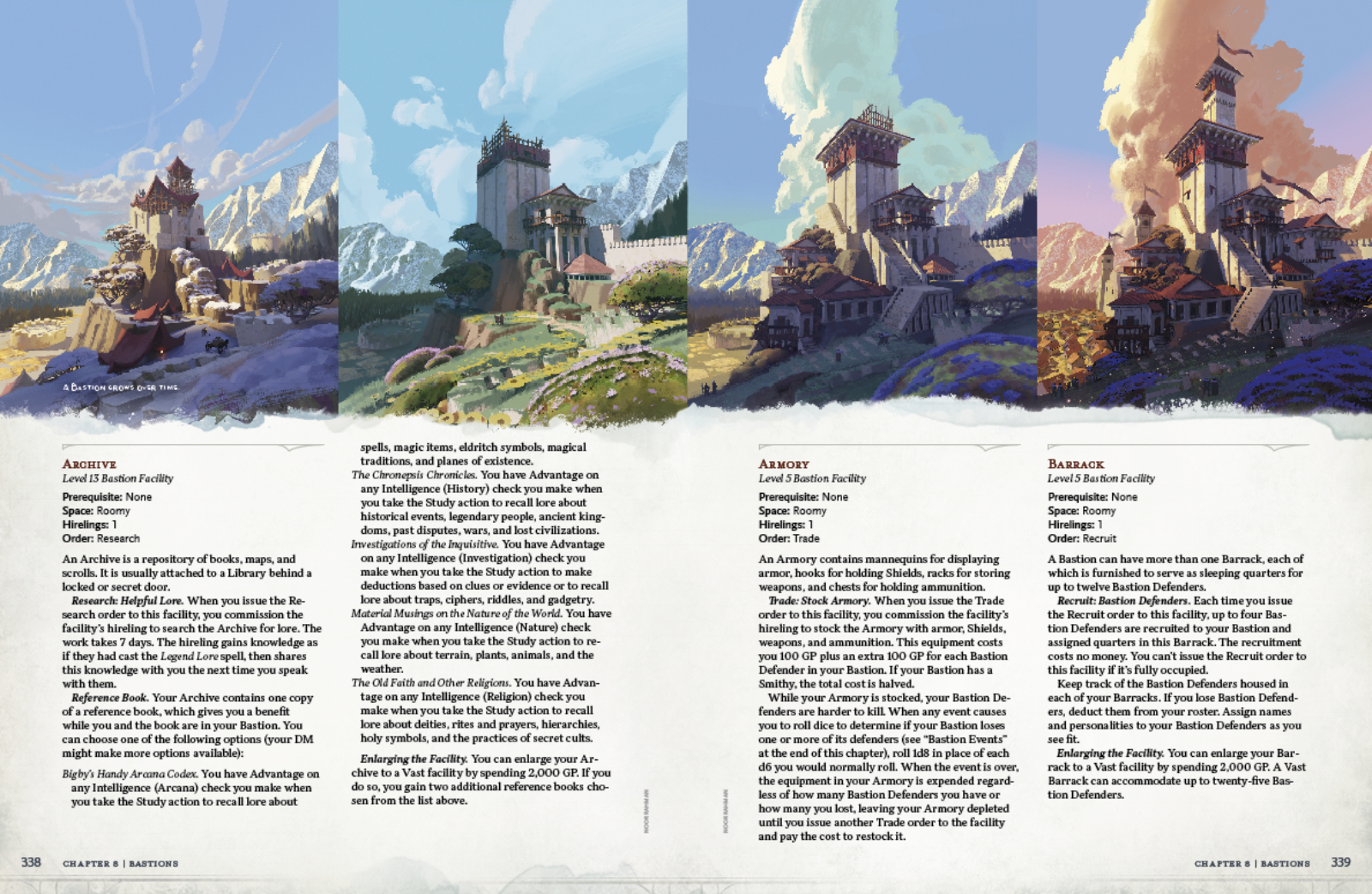
Like the campaign setting, bastions are wholly new content for the DMG. Based on strongholds which have been around to various extents in other editions of the game, the bastions chapter digs into a new feature for players. Capitalizing on the downtime activities from the 2014 book, bastions allow players to create home bases where they control the activities between play sessions. While it is not appropriate for every campaign, starting at 5th level, players may be given the option of creating bastions by the DM. PCs start with basic facilities for free, then as your PC gains levels you can add facilities to your bastion. Players can add a pub, a guild hall, a theater, or an observatory for example.
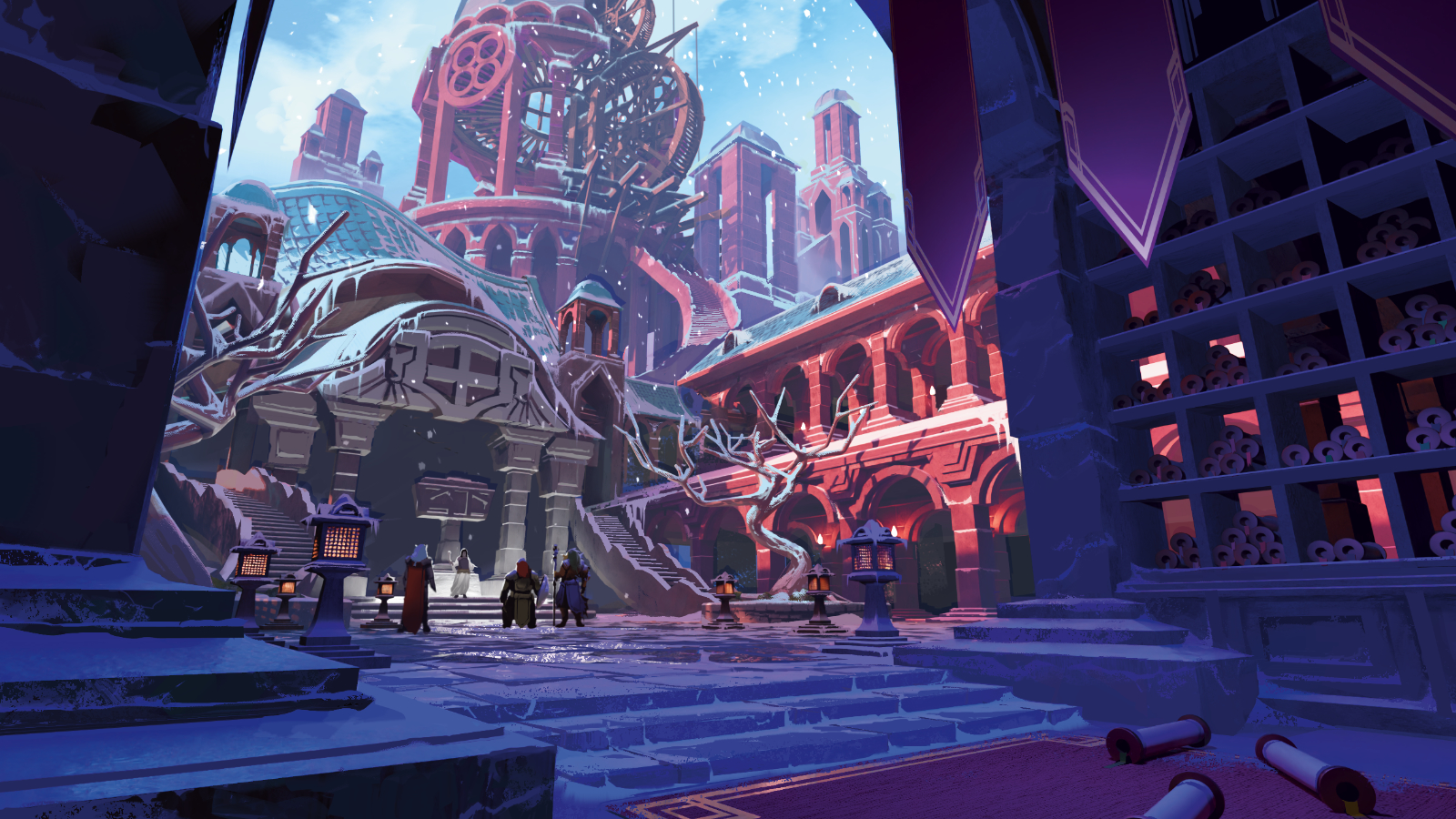
A cleric’s bastion
Players have total creative control over the look and contents of their bastions, which don’t have to just be castles. Chris suggested an attic, an old house, or part of a larger structure. Bastions can give your PCs in game benefits but won’t interfere with the baseline D&D play experience. Bastions are handled via a “Bastion Turn” which is separate from regular game play and happens regardless of the PCs location – your bastion operates whether your character is home or away adventuring, and bastion turns can happen between gaming sessions.
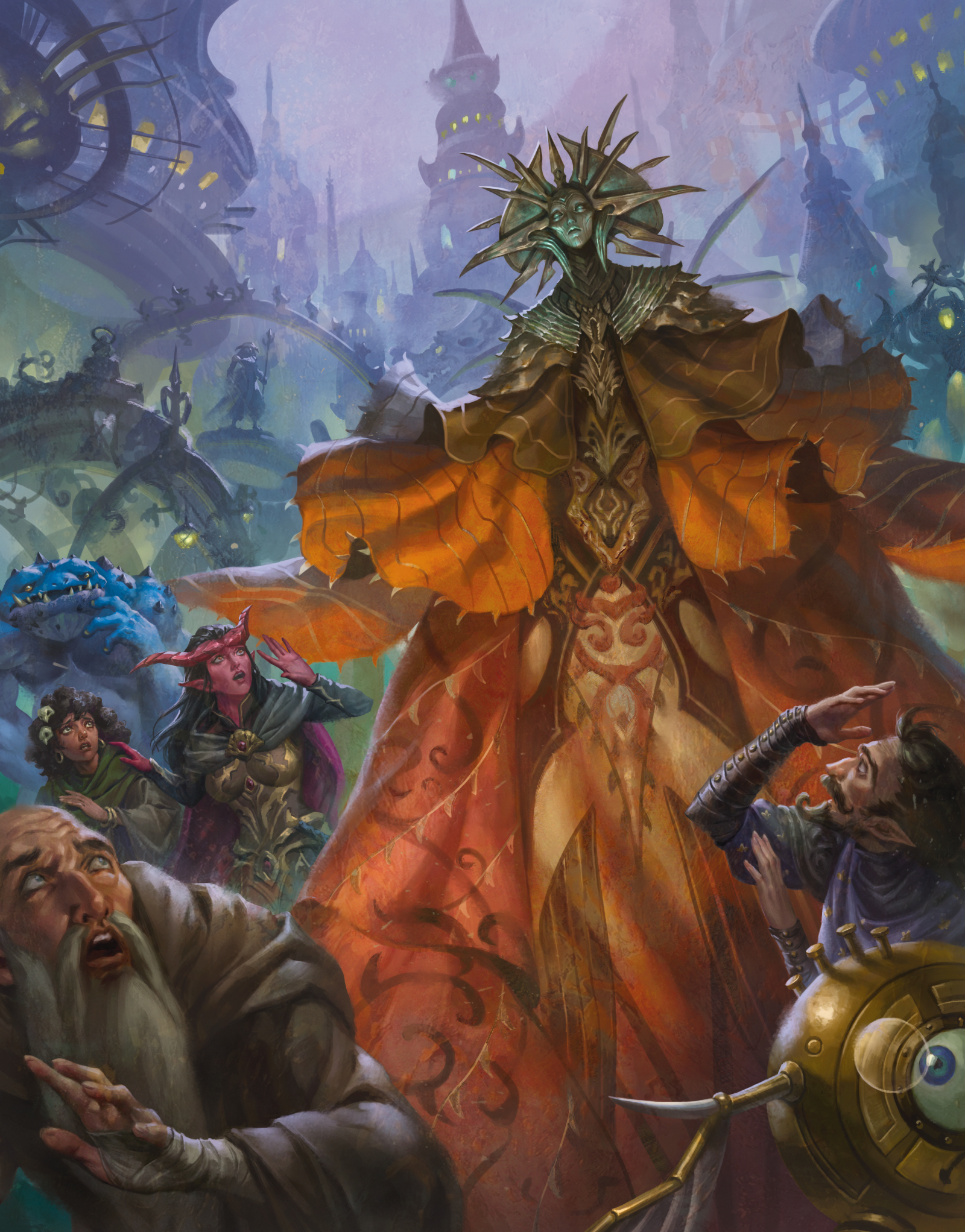
The remaining parts of the book cover cosmology, treasure and lore. In the cosmology chapter, you’ll find a gazetteer of the planes, which goes further than the 2014 book by identifying layers within the planes and what makes them distinct. There’s also the addition of Wildspace and Yggdrasil (essential to Barbarians that have the Path of the World Tree subclass). There are over 100 pages dedicated to treasure, a good portion of which is magic items. While new items have been added all items have been revised. Additional magic items include more common magic items, and some new items such as those featured in the 1980s cartoon: Hank’s magic bow; and Bobby’s great club to name a few. To go with the new crafting rules in the Player’s Handbook there are crafting rules for magic items: Player characters can make their own magic items (minus artifacts). The Lore Glossary appendix contains short descriptions of iconic D&D elements to bring new players up to speed with random names in the game’s lore.
Releasing concurrently with the DMG is a new 2024 DM’s screen, which has been revised to match the new DMG. Two main changes for usability include a larger font for ease of reading when standing, and center panels with less-often used information (by more experienced DMs) so that they can be blocked by a laptop. Art on the outside of the screen has gold dragons bookending art that showcases the twelve character classes.
DMs can get early access to the digital edition of the DMG on D&D Beyond at the Master Tier and physical copies at local game stores in North America on October 29th. The D&D Beyond at the Hero Tier early access starts on November 5th. The DMG and DM screen wide release will be on the 12th of November.
